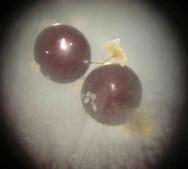
Dugesia and other freshwater planarians are found under stones or other objects (they are negatively phototactic). Turbellarians are hermaphroditic with internal fertilization.ĭugesia is a triclad, so has a gut with three branches. Light-sensitive pigment-cup ocelli occur in various places. The nervous system consists of a bilobed brain, or cerebral ganglion, from which longitudinal nerve cords arise and extend posteriorly for the length of the body. The end product of nitrogen metabolism is ammonia, which is lost by diffusion across the body surface. Nutrients are delivered to tissues by diffusion from the gut, whereas oxygen diffuses across the body surface. There is no blood system and transport is by diffusion, which is facilitated by small body size and flattening. Osmoregulation and fluid regulation is accomplished with protonephridia. Most are aquatic, inhabiting the oceans and fresh water (where most are benthic), but a few are found in moist terrestrial environments. The mouth is located somewhere on the ventral midline and opens into a blind gut, or gastrovascular cavity, which lacks an anus and sometimes lacks a lumen. The body is cylindrical in small species (that may be as small as ciliated protozoa) and dorsoventrally flattened in larger species. Neoophorans includes 4500 described species of free-living flatworms. Flatworms have elaborate hermaphroditic reproductive systems. As in other bilateral animals, there is an anterior brain and associated sense organs. The gut, if present, has a single opening to the exterior. Unlike most triploblastic animals, they have no body cavity and no blood system.

Modified, with permission, from Invertebrate Anatomy OnLineĬopyright 2003 by Richard Fox (Lander University)įlatworms, or platyhelminths, are bilaterally symmetrical and have three tissue layers.


 0 kommentar(er)
0 kommentar(er)
